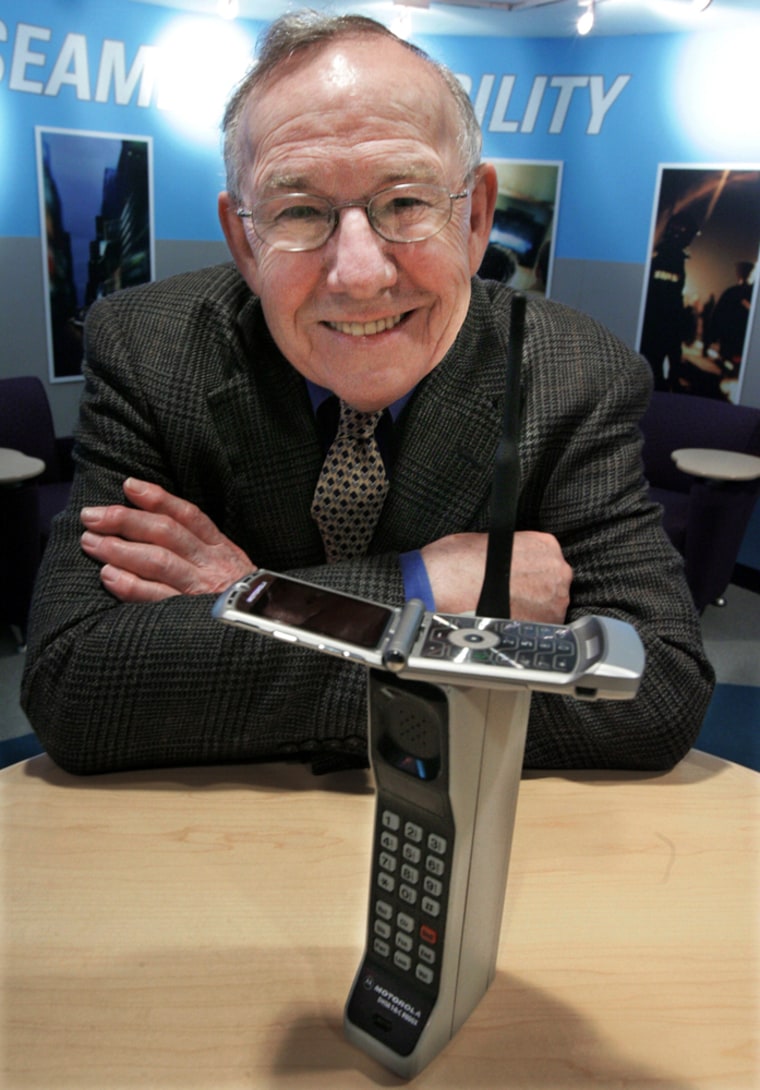"The brick" weighed 2 pounds, offered just a half-hour of talk time for every recharging and sold for $3,995.
Clunky and overpriced?
Not in 1984, when consumers lined up in droves to buy the first cellular phone as soon as it hit the market. And certainly not to Rudy Krolopp, lead designer of the Motorola DynaTAC 8000X.
Krolopp, now 74 and retired, still gets a "warm fuzzy feeling" thinking about the DynaTAC and knowing that "a handful of us did something that was really significant."
This brick took over a decade to get to market.
Krolopp was assigned the project by Martin Cooper, who ran Motorola's research and development effort in wireless and was ultimately dubbed the father of the cell phone by then-CEO Robert Galvin. Both Cooper's and Krolopp's names are on the original patent along with that of John Mitchell, former head of the company's communications division.
"Marty called me to his office one day in December 1972 and said, 'We've got to build a portable cell phone,'" Krolopp recalled. "And I said 'What the hell's a portable cell phone?'"
Talk about short talk time — Krolopp and his team were given six weeks to come up with a working model.
The urgency was because the Federal Communications Commission was deliberating over whether to allow AT&T to set up a network to provide wireless service in local markets, and the phone company itself was considering making wireless phones. Motorola didn't want to be shut out.
After the meeting with Cooper, Krolopp got together with his design staff and built a conceptual model.
"We sprung it on the engineers one day," he said, recalling their surprise at how small it was at the time. "There were only eight guys in the room. Cooper said 'Anybody who doesn't believe this can be done, leave the room.'"
No one did. But it was another 10 years and a total of $100 million in development costs before the phone was officially unveiled in 1983 — the delay resulting mostly from the need to build towers and infrastructure.
Krolopp says Motorola's new Razr is "really a cut above" anything that was done in the past but still represents only "the tip of the iceberg" of what phone designers will be able to do.
"Oh, would we have loved to do that back then," he said of the Razr's wafer-thin size. "We had the capability to design it but we didn't have the capability to build it. We couldn't get batteries down that small, couldn't get antennas that small, couldn't get key pads to work that way.
"Technology has changed so much."
